Lapin Rose |
|
 |
 |
Jacket and jumpsuit in Pelliza and Baby-ull. Soft rabbit in Pelliza
DROPS Baby 10-2 |
|
|
Knitting gauge: 15 sts x 22 rows on needle size 5 MM = US 8 in stockinette sts with 1 thread Baby-ull and 1 thread Pelliza (double thread) = 10 x 10 cm = 4" x 4". Garter sts (back and forth on needle: knit all rows. Garter sts (on circular needle): 1st round: K, 2nd round: P. Decreasing tips (apply to jumpsuit): Dec for armhole and neck inside 2 sts in garter sts. All dec are made from the RS. Dec as follows before 2 sts: K2 tog Dec as follows after 2 sts: slip 1 st as if to knit, K1, psso. Buttonhole: Make 5 buttonholes on right front edge on jacket from the RS. 1 buttonhole = bind off the 3rd st from the edge and cast on 1 new st n the same place on the return row. Make buttonholes as follows: Size 1/3 months: 5, 10, 15, 20 and 25 cm = 2", 4", 6", 8" and 9¾" Size 6/9 months: 6, 12, 17, 22 and 27 cm = 2⅜", 4¾", 6¾", 8¾" and 10⅝" Size 12/18 months: 7, 13, 19, 25 and 31 cm = 2¾", 5⅛", 7½", 9¾" and 12¼" JACKET: Back piece: Cast on 43-47-52 sts (incl 1 edge st each side) on needle size 4 MM = US 6 with 1 thread Baby-ull and 1 thread Pelliza and knit 4 rows of garter sts. Change to needle size 5 = US 8 and continue in stockinette sts. Remember the knitting gauge! When piece measures 19-20-23 cm = 7½"-8"-9" bind off for armhole each side on every other row: 3 sts 1-1-1 time and 1 st 4-5-6 times = 29-31-34 sts. When piece measures 28-30-34 cm = 11"-11¾"-13⅜" bind off the middle 11-11-14 sts for neck and dec 1 st on neckline on next row = 8-9-9 sts left on each shoulder. Bind off when piece measures 30-32-36 cm = 11¾"-12½"-14¼". Left front piece: Cast on 27-29-31 sts (incl 1 edge st at side + 4 front edge sts towards mid front) on needle size 4 MM = US 6 with 1 thread Baby-ull and 1 thread Pelliza and knit 4 rows in garter sts. Change to needle size 5 = US 8 and continue in stockinette sts with all edge sts in garter sts. When piece measures 19-20-23 cm = 7½"-8"-9" bind off for armhole at the side as done for back piece = 20-21-22 sts. When piece measures 26-28-32 cm = 10¼"-11"-12½" bind off 7-7-8 sts towards mid front for neck and dec to shape the neckline on every other row: 2 sts 1-1-1 time and 1 st 3-3-3 times. Bind off remaining sts when piece measures 30-32-36 cm = 11¾"-12½"-14¼". Right front piece: Cast on and knit as left front piece, but mirrored, and make 5 buttonholes – see above. Sleeve: The pattern allows for 5 cm = 2" turn-up. Cast on 26-29-31 sts (incl 1 edge st each side) on pointed needles size 5 MM = US 8 with 1 thread Baby-ull and 1 thread Pelliza and knit 5 rows of garter sts (= turn-up). Insert a marker and measure piece from here. Continue in stockinette sts. When piece measures 5-5-5 cm = 2"-2"-2" inc 1 st each side a total of 3-3-4 times on every 6-6-5 cm = 2⅜"-2⅜"-2" = 32-35-39 sts. When sleeve measures 27-29-31 cm = 10⅝"-11⅜"-12¼" bind off for sleeve cap each side on every other row: 2 sts 2-2-3 rimes, 1 st 2-3-3 times and then 2 sts each side until piece measures 28-31-33 cm = 11"-12¼"-13". Bind off remaining sts. Assembly: Sew shoulder seam. Hood: Pick up approx 35 to 40 sts round the neck on needle size 5 MM = US 8 with 1 thread Baby-ull and 1 thread Pelliza and knit stockinette sts with 4 edge sts in garter sts each side. After 1 cm = ⅜" inc evenly on row to 50-52-54 sts. Continue until hood measures 24-25-26 cm = 9½"-9¾"-10¼" and bind off. Sew tog hood at the top. Set in sleeves. Sew sleeve and side seams inside 1 edge st. Sew on buttons. Ears: Cast on 12 sts on needle size 2.5 MM = US 1.5 with 1 thread Baby-ull. Knit 2 rows in garter sts and continue in stockinette sts with 1 edge st each side in garter sts. When piece measures approx 4.5 cm = 1⅝" dec 1 st inside the edge st each side on every other row 4 times. Now bind off the remaining 4 sts from the WS. Knit 2 ears in pink Baby-ull (= the inside of the ears) and 2 ears in off-white Pelliza (= the outside of the ears). Place 1 ear in Baby-ull on top of 1 ear in Pelliza and sew tog with off-white Pelliza from the RS – don’t sew the bottom edges. Fill the ears with cotton wool and attach them to the top of the hood. JUMPSUIT: Left leg: Start mid under foot and knit back and forth on circular needle. Cast on 32-36-38 sts (incl 1 edge st each side) on circular needles size 5 MM = US 8 with 1 thread Baby-ull and 1 thread Pelliza and knit stockinette sts. When piece measures 2 cm = ¾" insert a marking thread and measures piece from here. After 3-3.5-4 cm = 1⅛"-1¼"-1½" dec each side on every other row: 3 sts 1-1-1 time and 2 sts 2-2-2 times = 18-22-24 sts. Distribute the sts on double pointed needles size 5 MM = US 8 and knit round in stockinette sts. When piece measures 5-6-7 cm = 2"-2⅜"-2¾" inc 6 sts evenly = 24-28-30 cm = 9½"-11"-11¾". Repeat the inc on every 2 cm = ¾" a total of 3 times = 42-46-48 sts. When piece measures 16-20-23 cm = 6¼"-8"-9" (from marker) divide piece after the 10th-11th-12th st from mid front (= inner side of leg and split to facilitate putting legs on the same circular needle later). Finish leg back and forth on needle and inc 1 st each side for seam = 44-48-50 sts. When piece measures 18-22-25 cm = 7"-8¾"-9¾" bind off 2 sts each side = 40-44-46 sts. Put the piece aside and knit the other leg. Right leg: Cast on and knit as left leg but with the split the other side. Body: Put both legs on the same circular needle = 80-88-92 sts. Knit 3 rounds in stockinette sts and now inc mid back and dec mid front as follows: Inc 1 st on each side of the 2 middle sts mid back on every other round 6 times and dec 1 st on each side on the 2 middle sts mid front 4-6-6 times on every other row: before the 2 middle sts K2 tog, after the 2 middle sts slip 1 st as if to knit, K1, psso. When piece measures 25-29-32 cm = 9¾"-11⅜"-12½" dec 4-4-4 sts evenly on row = 80-84-88 sts. Repeat the inc when piece measures 32-36-38 cm = 12½"-14¼"-15" and 39-43-45 cm = 15¼"-17"-17¾" = 72-76-80 sts. Insert a marking thread each side. When piece measures 47-51-54 cm = 18½"-20"-21¼" P 1 row over the 8-8-8 sts each side and then bind off 4-4-4 sts each side for armhole. Now finish front and back pieces separately back and forth on needle. Front piece: = 32-34-36 sts. Dec for armhole – see decreasing tips – 1 st each side on every other row 3-3-2 times = 26-28-32 sts. Continue with 2 sts each side in garter sts. When piece measures 53-58-63 cm = 21"-22¾"-24¾" P 1 row over the middle 10-12-14 sts. Now bind off the middle 6-8-10 sts for neck and dec to shape the neckline – see decreasing tips – on every other row: 1 st 3-3-3 times = 7-7-8 sts left on each shoulder. When piece measures 57-62-68 cm = 22½"-24⅜"-26¾" continue in garter sts over all shoulder sts, at the same time after 2 rows make 2 buttonholes as follows: K1, bind off 1 st, K 3-3-4 sts, bind off 1 st, K1. On the return row make a yo over the bind off sts. Bind off after 6 rows in garter sts. Knit the other shoulder the same way. Back piece: = 32-34-36 sts. Dec for armhole as done for front piece = 26-28-32 sts. When piece measures 55-60-66 cm = 21⅝"-23⅝"-26" P 1 row over the middle 12-14-16 sts. Now bind off the middle 8-10-12 sts for neck and dec to shape the neckline – see decreasing tips – on every other row: 1 st 2-2-2 times = 7-7-8 sts left on each shoulder. When piece measures 57-62-68 cm = 22½"-24⅜"-26¾" knit 6 rows in garter sts over all shoulder sts and bind off. Pocket: Cast on 24-25-27 sts on needle size 5 MM = US 8 with 1 thread Baby-ull and 1 thread Pelliza. Knit 2 rows in garter sts and continue in stockinette sts with 1 edge st each side in garter sts. When piece measures 13-13-14 cm = 5⅛"-5⅛"-5½" P 1 row over all sts and bind off. Assembly: Sew the seam from the heel and to the top of the toes with Baby-ull inside 1 edge st. Sew the split on the inside of the legs up to the bind off sts and then the opening between the legs from mid front to mid back. Sew on the pocket mid front approx 11-13-15 cm = 4⅜"-5⅛"-6" from the neckline. Sew on buttons. RABBIT: Size: approx 26 cm = 10¼" Knitting gauge: 25 sts x 34 rows on needle size 2.5 MM = US 1.5 in stockinette sts = 10 x 10 cm = 4" x 4". The rabbit is knitted from bottom up in 2 pieces and sewn tog afterwards. Back piece: Cast on 10 sts (= 1 leg) on needle size 2.5 MM = US 1.5 with Pelliza and knit stockinette sts. When piece measures 7 cm = 2¾" put sts on a thread and knit the other leg. Put the 2 legs on the same needle as follows: 10 sts (= 1 leg), cast on 1 new st, 10 sts (= 1 leg) = 21 sts. Continue in stockinette sts until piece measures 13 cm = 5⅛". Now cast on 10 new sts each side for arms = 41 sts. When piece measures 16 cm = 6¼" bind off 13 sts each side = 15 sts. When piece measures 20 cm = 8" bind off the middle 3 sts and finish each ear separately. 1 ear = 6 sts. Continue in stockinette sts until piece measures 26 cm = 10¼" and bind off). Knit the other ear in the same way. Front piece: Cast on and knit as back piece. Assembly: Sew the pieces tog using Pelliza – sew from the right side and fill with cotton wool as you go along. Sew on pink snout and brown eyes and pull 3 brown strands through the snout as whiskers. |
|

|
|

|
|
|
Have you made this or any other of our designs? Tag your pictures in social media with #dropsdesign so we can see them! Do you need help with this pattern?You'll find tutorial videos, a Comments/Questions area and more by visiting the pattern on garnstudio.com. © 1982-2024 DROPS Design A/S. We reserve all rights. This document, including all its sub-sections, has copyrights. Read more about what you can do with our patterns at the bottom of each pattern on our site. |
|








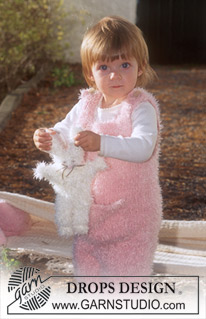





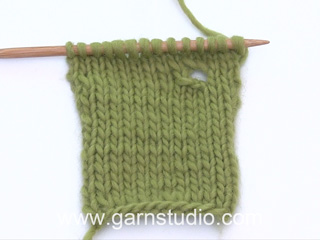


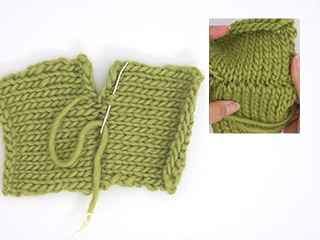

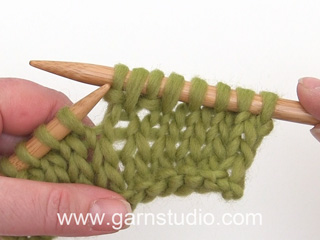
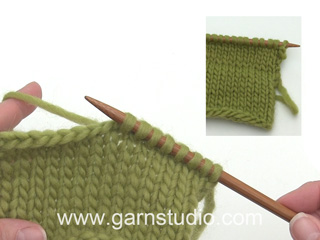

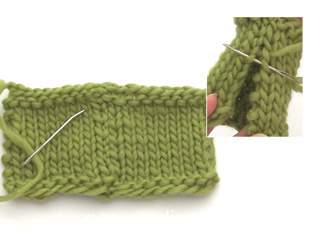
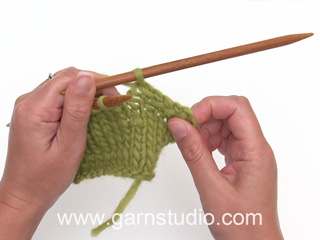

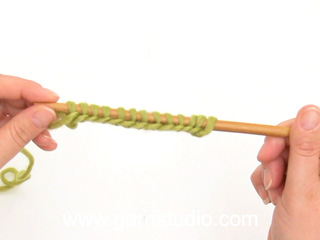

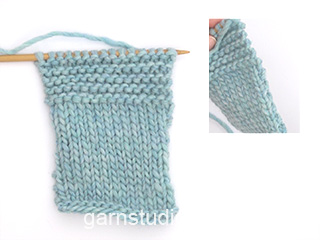
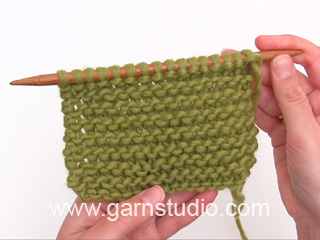





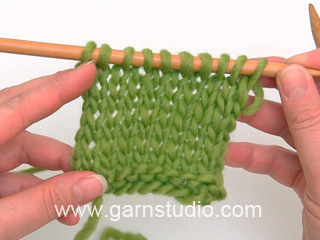




















Comments / Questions (1)
Da es die Originalwolle nicht mehr gibt habe ich folgende Frage: Was empfehlen Sie als Ersatz für Pelliza?
04.11.2013 - 16:19DROPS Design answered:
Liebe Veronika, den starken Pelzeffekt erreicht man mit den Garnalternativen zwar nicht, aber ich würde Ihnen Kid Silk (zusammen mit Baby Merino) empfehlen. Achten Sie bei Garnalternativen besonders auf die Maschenprobe, bevor Sie das Modell stricken.
05.11.2013 - 09:18